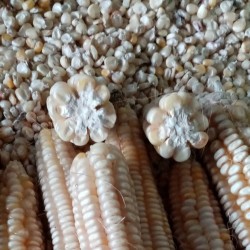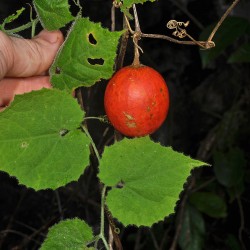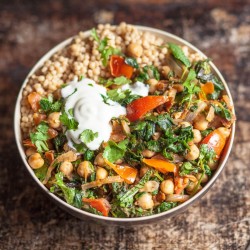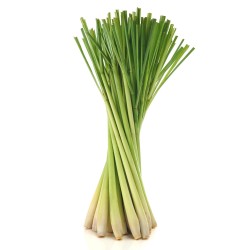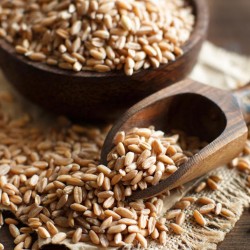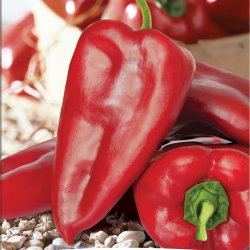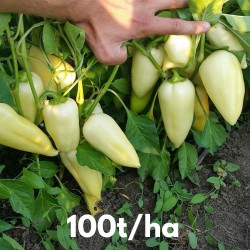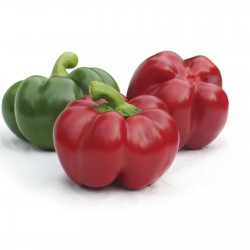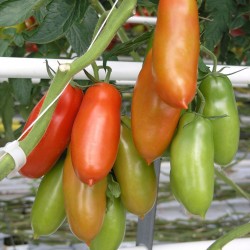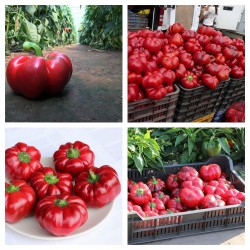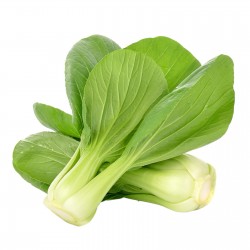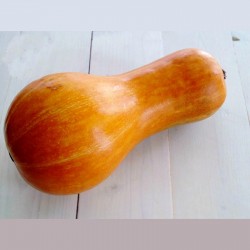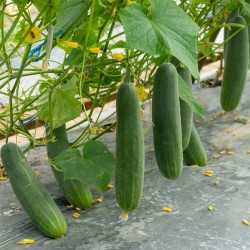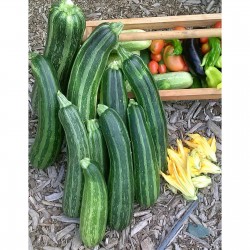
Ayurveda Plant

Medicinal or spice plant
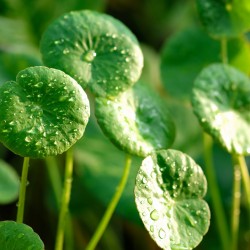
Gotu kola Seeds (Centella...
Price
€2.45
(SKU: MHS 78)
Seeds Gallery EU,
5/
5
<h2><strong>Gotu kola Seeds (Centella asiatica)</strong></h2>
<h2><span style="color: #fd0000;"><strong>Price for Package of 20 seeds.</strong></span></h2>
<p style="color: #202122; font-size: 14px;"><i><b>Centella asiatica</b></i>, commonly known as<span> </span><b>Gotu kola</b>,<span> </span><b>kodavan</b>,<span> </span><b>Indian pennywort</b><span> </span>and<span> </span><b>Asiatic pennywort</b>, is a<span> </span>herbaceous,<span> </span>perennial plant<span> </span>in the<span> </span>flowering plant<span> </span>family<span> </span>Apiaceae.<sup id="cite_ref-cabi_2-1" class="reference" style="font-size: 11.2px;">[2]</sup><span> </span>It is native to the wetlands in<span> </span>Asia.<sup id="cite_ref-3" class="reference" style="font-size: 11.2px;"></sup><sup id="cite_ref-FD_4-0" class="reference" style="font-size: 11.2px;"></sup><span> </span>It is used as a culinary<span> </span>vegetable<span> </span>and as a<span> </span>medicinal herb.<sup id="cite_ref-cabi_2-2" class="reference" style="font-size: 11.2px;"></sup></p>
<h2 style="color: #000000; font-size: 1.5em;"><span class="mw-headline" id="Description">Description</span></h2>
<p style="color: #202122; font-size: 14px;"><i>Centella</i><span> </span>grows in<span> </span>temperate<span> </span>and<span> </span>tropical<span> </span>swampy areas in many regions of the world.<sup id="cite_ref-cabi_2-3" class="reference" style="font-size: 11.2px;">[2]</sup><span> </span>The stems are slender, creeping<span> </span>stolons, green to reddish-green in color, connecting plants to each other.<sup id="cite_ref-cabi_2-4" class="reference" style="font-size: 11.2px;">[2]</sup><span> </span>It has long-stalked, green, rounded apices which have smooth texture with palmately netted veins.<sup id="cite_ref-cabi_2-5" class="reference" style="font-size: 11.2px;">[2]</sup><span> </span>The leaves are borne on pericladial petioles,<sup class="noprint Inline-Template" style="font-size: 11.2px;">[<i><span title="The text near this tag may need clarification or removal of jargon. (September 2021)">clarification needed</span></i>]</sup><span> </span>around 2 cm (0.79 in). The rootstock consists of<span> </span>rhizomes, growing vertically down. They are creamish in color and covered with root hairs.<sup id="cite_ref-cabi_2-6" class="reference" style="font-size: 11.2px;">[2]</sup></p>
<p style="color: #202122; font-size: 14px;">The<span> </span>flowers<span> </span>are white or<span> </span>crimson<span> </span>in color, born in small, rounded bunches (umbels) near the surface of the soil.<sup id="cite_ref-cabi_2-7" class="reference" style="font-size: 11.2px;">[2]</sup><span> </span>Each flower is partly enclosed in two green bracts. The hermaphrodite flowers are minute in size, less than 3 mm (0.12 in), with five to six corolla lobes per flower. Each flower bears five stamens and two<span> </span>styles. The fruit are densely reticulate, distinguishing it from species of<span> </span><i>Hydrocotyle</i><span> </span>which have smooth, ribbed or warty fruit.<sup id="cite_ref-FD_4-1" class="reference" style="font-size: 11.2px;">[4]</sup><span> </span>The crop matures in three months, and the whole plant, including the roots, is harvested manually. It is a highly<span> </span>invasive<span> </span>plant, rated as "high risk".<sup id="cite_ref-cabi_2-8" class="reference" style="font-size: 11.2px;">[2]</sup><span> </span><i>Centella</i><span> </span>has numerous common names in its regions of distribution.<sup id="cite_ref-cabi_2-9" class="reference" style="font-size: 11.2px;">[2]</sup></p>
<h2 style="color: #000000; font-size: 1.5em;"><span class="mw-headline" id="Habitat">Habitat</span></h2>
<p style="color: #202122; font-size: 14px;"><i>Centella asiatica</i><span> </span>is indigenous to the Indian subcontinent, Southeast Asia, and wetland regions of the Southeastern US.<sup id="cite_ref-5" class="reference" style="font-size: 11.2px;">[5]</sup><sup id="cite_ref-6" class="reference" style="font-size: 11.2px;">[6]</sup><span> </span>Because the plant is aquatic, it is especially sensitive to biological and chemical pollutants in the water, which may be absorbed into the plant. It can be cultivated in drier soils as long as they are watered regularly enough (such as in a home garden arrangement).<sup class="noprint Inline-Template Template-Fact" style="font-size: 11.2px;">[<i><span title="This claim needs references to reliable sources. (June 2021)">citation needed</span></i>]</sup></p>
<h2 style="color: #000000; font-size: 1.5em;"><span class="mw-headline" id="Chemistry">Chemistry</span></h2>
<p style="color: #202122; font-size: 14px;"><i>Centella</i><span> </span>contains pentacyclic<span> </span>triterpenoids, including<span> </span>asiaticoside,<span> </span>brahmoside,<span> </span>asiatic acid, and<span> </span>brahmic acid<span> </span>(madecassic acid). Other constituents include<span> </span>centellose,<span> </span>centelloside, and madecassoside.<sup id="cite_ref-7" class="reference" style="font-size: 11.2px;">[7]</sup><sup id="cite_ref-8" class="reference" style="font-size: 11.2px;">[8]</sup><sup id="cite_ref-9" class="reference" style="font-size: 11.2px;">[9]</sup></p>
<p style="color: #000000; font-size: 1.5em;"><span class="mw-headline" id="Culinary_use">Culinary</span><span id="Culinary_use"> use</span><span id="Culinary_use"><br></span><span></span></p>
<p style="color: #202122; font-size: 14px;">In<span> </span>Burmese cuisine, raw pennywort is used as the main constituent in a salad mixed with onions, crushed peanuts, bean powder and seasoned with lime juice and fish sauce. Centella is used as a leafy green in<span> </span>Sri Lankan<span> </span>cuisine, being the predominantly locally available leafy green, where it is called<span> </span><i lang="si-Latn" title="Sinhala-language romanization">gotu kola</i>. It is most often prepared as<span> </span><i lang="si-Latn" title="Sinhala-language romanization">malluma</i>, a traditional accompaniment to<span> </span>rice<span> </span>and vegetarian dishes, such as<span> </span><i lang="hi-Latn" title="Hindi-language romanization">dal</i>, and<span> </span>jackfruit<span> </span>or<span> </span>pumpkin<span> </span>curry. It is considered nutritious. In addition to finely chopped<span> </span><i lang="si-Latn" title="Sinhala-language romanization">gotu kola</i><span> </span>plants, the<span> </span><i lang="si-Latn" title="Sinhala-language romanization">gotu kola malluma</i><span> </span>may be eaten with grated<span> </span>coconut, diced<span> </span>shallots,<span> </span>lime<span> </span>(or<span> </span>lemon) juice, and sea salt. Additional ingredients are finely chopped green<span> </span>chilis,<span> </span>chili powder,<span> </span>turmeric<span> </span>powder, or chopped<span> </span>carrots. The<span> </span><i>Centella</i><span> </span>fruit-bearing structures are discarded from the<span> </span><i lang="si-Latn" title="Sinhala-language romanization">gotu kola malluma</i><span> </span>due to their intense bitter taste. A variation of<span> </span>porridge<span> </span>known as<span> </span><i lang="si-Latn" title="Sinhala-language romanization">kola kenda</i><span> </span>is also made with<span> </span><i lang="si-Latn" title="Sinhala-language romanization">gotu kola</i><span> </span>in Sri Lanka.<span> </span><i lang="si-Latn" title="Sinhala-language romanization">Gotu kola kenda</i><span> </span>is made with well-boiled red rice with some extra liquid,<span> </span>coconut milk<span> </span>first extract, and<span> </span><i lang="si-Latn" title="Sinhala-language romanization">gotu kola</i><span> </span>purée. The porridge is accompanied with<span> </span>jaggery<span> </span>for sweetness.<span> </span><i>Centella</i><span> </span>leaves are also used in modern sweet pennywort drinks and herbal teas. In addition the leaves are served stir-fried whole in coconut oil, or cooked in coconut milk with garlic or<span> </span><i lang="hi-Latn" title="Hindi-language romanization">dhal</i>.</p>
<p style="color: #202122; font-size: 14px;">In<span> </span>Indonesia, the leaves are used for<span> </span><i>sambai oi peuga-ga</i>, an<span> </span>Aceh<span> </span>type of salad, and is also mixed into<span> </span><i>asinan</i><span> </span>in<span> </span>Bogor. In<span> </span>Cambodia,<span> </span>Vietnam<span> </span>and<span> </span>Thailand, this leaf is used for preparing a drink or can be eaten in raw form in salads or<span> </span>cold rolls. In Bangkok, vendors in the<span> </span>Chatuchak Weekend Market<span> </span>sell it alongside coconut,<span> </span>roselle,<span> </span>chrysanthemum, orange and other health drinks. In<span> </span>Malay cuisine<span> </span>it is known as pegaga, and the leaves of this plant are used for<span> </span><i>ulam</i>, a type of vegetable salad.<sup id="cite_ref-cabi_2-10" class="reference" style="font-size: 11.2px;">[2]</sup><span> </span><i>C. asiatica</i><span> </span>is widely used in various<span> </span>Indian regional cuisines. In Bangladesh Centella is called<span> </span><i>Thankuni Pata</i><span> </span>and used in various dishes, one of the most appetising of which is the<span> </span>pakora-like snack called<span> </span><i>Thankuni Patar Bora</i>; made of mashed<span> </span><i>Centella</i>,<span> </span>lentils,<span> </span>julienne-ed onion and<span> </span>green chilli.<sup class="noprint Inline-Template Template-Fact" style="font-size: 11.2px;">[<i><span title="This claim needs references to reliable sources. (January 2021)">citation needed</span></i>]</sup></p>
<h2 style="font-size: 1.5em;"><span class="mw-headline" id="Traditional_medicine">Traditional medicine</span></h2>
<p style="color: #202122; font-size: 14px;">In<span> </span>traditional medicine,<span> </span><i>C. asiatica</i><span> </span>has been used to treat various disorders and minor wounds,<sup id="cite_ref-cabi_2-11" class="reference" style="font-size: 11.2px;">[2]</sup><span> </span>although clinical efficacy and safety have not been scientifically confirmed.<sup id="cite_ref-drugs_10-0" class="reference" style="font-size: 11.2px;">[10]</sup><span> </span>Contact dermatitis<span> </span>and skin irritation can result from<span> </span>topical application.<sup id="cite_ref-drugs_10-1" class="reference" style="font-size: 11.2px;">[10]</sup><span> </span>Drowsiness<span> </span>may occur after consuming it.<sup id="cite_ref-drugs_10-2" class="reference" style="font-size: 11.2px;">[10]</sup><span> </span>The herb may have<span> </span>adverse effects<span> </span>on<span> </span>liver function<span> </span>when used over many months.<sup id="cite_ref-drugs_10-3" class="reference" style="font-size: 11.2px;">[10]</sup><sup id="cite_ref-11" class="reference" style="font-size: 11.2px;">[11]</sup></p>
<h2 style="font-size: 1.5em;"><span class="mw-headline" id="Agriculture">Agriculture</span></h2>
<p style="color: #202122; font-size: 14px;">In the context of<span> </span>phytoremediation,<span> </span><i>C. asiatica</i><span> </span>is a potential<span> </span>phytoextraction<span> </span>tool owing to its ability to take up and<span> </span>translocate<span> </span>metals from root to shoot when grown in soils contaminated by<span> </span>heavy metals.<span id="Culinary_use"></span><span class="mw-headline" id="Culinary_use"><br></span></p><script src="//cdn.public.n1ed.com/G3OMDFLT/widgets.js"></script>
MHS 78







